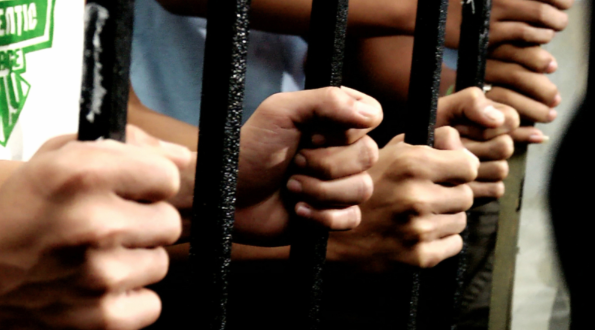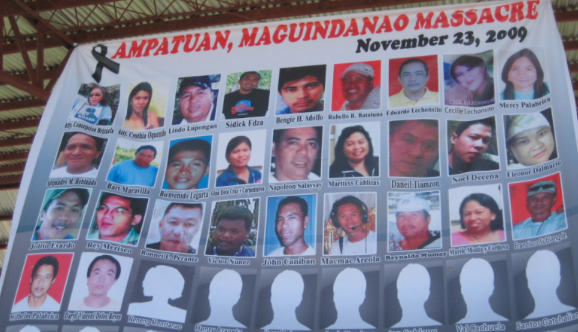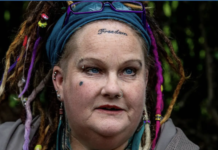By Zita Featherstone – Media Intern at Amnesty International

© Amnesty International
I find myself frightened of most things. You’ll often find me running from Labradors in the park in case they maul me, looking under my bed for people with knives, and checking to see if my flatmates have locked the front door 10 times before I go to sleep. Because fear often grips me with such a tight fist, for years I have been interested in those who seem to live in absence of it.
Don’t get me wrong, there have been times where I have felt ‘courageous.’ Being a part of a university student movement, marching the streets in protest of various injustices, and in my current role at Amnesty International, but it’s never something I’ve been able to muster without the support of others driving towards a similar cause. So in the weeks surrounding World Press Freedom day I decided to explore the interplay between courage and fear by interviewing a journalist who has worked in a country where journalists are killed in the hundreds, to find out where her courage comes from.
When I asked NM* if I could interview her for a blog on World Press Freedom day, she looked up at me from the magazine she was proofing with almost vacant eyes.
“Oh it’s today?” She said. “It used to mean so much to me, but now, living here, I feel so divorced from it all – it all seems so long ago.”
NM was a journalist in the Philippines for seven years, a country named by the International Federation of Journalists (IFJ) as the second most dangerous in the world for journalists after Iraq. With a recent report by the IFJ stating that at least 2,297 journalists and media staff worldwide have been killed in the last 25 years, it’s not hard to see why NM gave up her life as a journalist and moved to New Zealand to give her children a safer future.
Like many around the world, NM’s journey to exposing the truth was ignited through her University studies.
“I was in a school where generations of students have always taken the lead in creating reforms for the country. Historically that’s where some important uprisings had begun. It was almost the natural thing to be an activist and to be always aware of issues happening, and to be responsive to them.
“We took to the streets to peacefully protest various issues. People knew us as street parliamentarians. The 1980s were a dangerous but important time in the Philippines as we were living under a dictatorship and nearing the end of ten years of martial rule.
“Under martial law students could be arrested for assembly or just for talking in a negative way about the institution, many of the papers were even shut down. But being a young student, you don’t think about the dangers to your family, or yourself. Eventually the dictator was toppled through people power, through the millions of people taking peacefully to the streets and for awhile it was better.
Becoming a journalist for NM seemed like the natural progression in her activism and pursuit of justice.
“You might say there was a sense of calling coupled with idealism being a young student. Because of the context, there was a need for journalists who were also advocates. Otherwise there would be so many people’s voices who would not be heard, so many issues unresolved, corruption happening right before your eyes. Knowing the truth, I felt like I had a duty to changes things.”
When I asked if she ever felt afraid or at threat, NM says without the smallest sign of flinching, “Well, the biggest fear is really death.”
“I do know a number of people who have been killed or threatened because of the things they had written. Especially during the dark days, it was very common for journalists to be abducted and tortured to discourage free journalism. It is really quite surreal when you think that shooting the messenger is such a common thing. I guess I was just lucky because I worked for a big paper and there is always safety in having a big organisation behind you.

On November 23 2009, the bloodiest ever slaughter of journalists in a single incident occurred in Maguindanao province, southern Philippines. At least 58 people, 32 of them journalists, were murdered in Ampatuan town on Nov. 23, 2009 after an entire election convoy was ambushed. © Amnesty International
“It seems such a distant memory now, but I know for many journalists it is still a harsh reality. But really, it’s a duty to bring out the truth as a journalist, even if that truth puts you in danger. That’s why I had to change jobs and eventually leave the Philippines once I had my children, it wasn’t just me I was putting in danger anymore. No story was worth dying for if it meant not being around for my family. Journalists in genuinely free countries like New Zealand are lucky because they do not have to assert their press freedom as a matter of life or death.”
All round the world, journalists are under attack simply for doing their jobs. Amnesty International aims to shed light on this injustice. To read more about press freedom, view Amnesty’s press release from this year’s World Press Freedom Day which highlights nine cases of journalists from across the globe – journalists who have been harassed, threatened, locked up and tortured in a brutal bid to muzzle free expression.
*For the safety of NM and her family, names and other details have been changed or kept vague to protect her anonymity.




